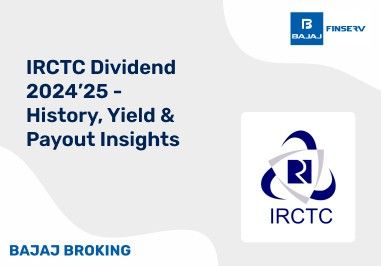Trailing Stop Loss
There are several trading strategies in the stock market that investors and traders can use to their advantage. The Trailing Stop Loss is one such strategy where the strategy itself can adjust to the market volatility automatically. This, in turn, helps provide investors and traders with a better chance to protect their profits and also reduce potential losses.
The trailing stop loss is unlike other stop loss strategies in the market. Since it can adjust itself automatically to the fluctuations in the market, it locks in the gains when the price of a security climbs and reduces the losses if the value of the security drops.
Think of the trailing stop loss as an immensely strong safety net for traders and investors. The main purpose of the strategy is to provide them with a barrier that helps them preserve the returns they have made and save them from the sudden downturns that markets can experience.
What is Trailing Stop Loss?
Of the many trading strategies that traders use, Trailing Stop Loss can be considered a trading order that automatically makes adjustments to help preserve the gains of a trader and limit their losses as well.
The main way the trailing stop loss works is by placing a stop order at a particular percentage away from the market price of an asset. If and when the value of the security climbs, the stop order trails with it, upwards. The same trailing habit holds if and when the price of the security moves downwards.
This kind of trailing behaviour makes sure that the trade order remains open till the price movement is working in the favour of the trader. This behaviour also results in the automatic closing of the order if and when the price movement in the market changes direction thanks to the set percentage on the trailing stop loss.
How Does a Trailing Stop Loss Work?
The main mechanism behind the working of the trailing stop loss is based on its ability to adjust to the market prices. When the market price of a particular asset goes up, the strategy follows at a preset distance.
When it comes to the price of an asset dropping, then the stop price of the strategy, however, does not change. Due to this property, traders can cash in on the maximum profit that they can make in a trade, without worrying too much about the potential losses.
Here are a few pointers to help you understand the working of the trailing stop loss strategy:
With the trailing stop loss in place, the stop price only moves or trails with an asset’s price movement if it goes up
The stop price however stays the same if the asset price moves downward.
The stop price is usually fixed as a percentage below an asset’s market price.
The way an order gets triggered and a sale achieved, with a trailing stop loss in place is by the fall of the market price of the asset to the stop price.
Key Features of Trailing Stop Loss
One of the great things about the trailing stop loss is that it combines flexibility and safety and offers traders protection from potential losses while letting them capitalize on the maximum gains they can make from a particular trade.
Listed below are some of the main features of the trailing stop loss:
The trailing stop loss can automatically adjust itself based on upward positive market movements. This, in turn, has the potential to increase the profits for a trader.
When the price movement of an asset moves downwards, the trailing stop loss level does not change. This limits any potential losses that might arise from a trade.
The stop loss trailing percentage can be defined by the trader based on their investment goals.
The trailing stop loss strategy is versatile and can be used in both bullish and bearish market conditions.
Trailing Stop Loss Example in Action
We understand that it can get a bit confusing when trying to decipher the trailing stop loss meaning. However, to ensure that you understand how the strategy works, here’s a trailing stop loss example listed down in points:
Let us suppose that a trader buys a share worth ₹100 and the trailing stop loss is set at 10%
This means that when the price of the share moves upwards to ₹150, the trailing stop loss in place adjusts to ₹135, i.e. 10% below the market price.
If after this, the market value of the share drops to ₹135 then the strategy gets triggered and the shares are sold at ₹135 providing the trader with a profit of ₹35.
Ideal Scenarios for Using Trailing Stop Loss
The trailing stop loss can be exceptionally beneficial for traders who know how and when to use it. The trading strategy can particularly prove to be very profitable when investors are looking forward to locking in profits in a volatile market.
To be more specific, some of the best scenarios to use the trailing stop loss are listed below:
Investors can place their trailing stop loss order with their broker or even through the investment software they are using.
The strategy works best when investors want to limit their losses while holding onto the potential of producing unlimited gains when the price of the asset rises.
This also works well when traders do not want to constantly monitor market movements or adjust their orders to avoid losses.
Pros & Cons of Using Trailing Stop Loss
Like every trading strategy being used in the stock market, the trailing stop loss also comes with its fair share of pros and cons. Here’s a look at both these aspects of the strategy.
Pros
The trailing stop loss lets traders lock in on their profits when the market movement leads to a rise in the price of an asset.
The strategy also limits the losses a trader might incur when the price of an asset falls.
Traders do not need to constantly monitor the market to adjust their orders since the trailing stop loss gets executed automatically.
The trailing stop loss lets traders manage emotions better as it prevents them from making impulsive decisions keeping the market fluctuations in mind.
Traders do not need to provide additional charges when placing the trailing stop loss on their orders.
Cons
Quite a few brokers do not let traders place stop-loss orders for particular ETFs or stocks.
If traders become too dependent on this strategy, they may lose touch with how to analyse market dynamics which, in turn, will inhibit their ability to make independent trading decisions.
If the market falls rapidly, the stop loss order might not get enough time to execute, thus leading to greater losses.
When the stop loss percentage is set too low when the market is highly volatile, then the sale might happen faster potentially leading to missed profits.
How Can Market Psychology Improve Trailing Stops?
Traders must understand that they need to resist the urge to reset their trailing stop loss when there is a temporary dip in the market. If this is not done, then the trader’s stop loss will be less effective and end up lower than expected. Conversely, it is also important that investors not reset their trailing stop-loss when they notice a temporary peak int he market prices.
Final Thoughts
Traders and investors must have good trading strategies up their sleeves to help them capitalize on the market movements in the best way. One of these strategies happens to be the trailing stop loss strategy. When used in the right manner, keeping all the impulsiveness aside, the chances for a trader to earn potentially unlimited profits are high while also limiting their losses.
Disclaimer: Investments in the securities market are subject to market risk, read all related documents carefully before investing.
This content is for educational purposes only. Securities quoted are exemplary and not recommendatory.
For All Disclaimers Click Here: https://bit.ly/3Tcsfuc













